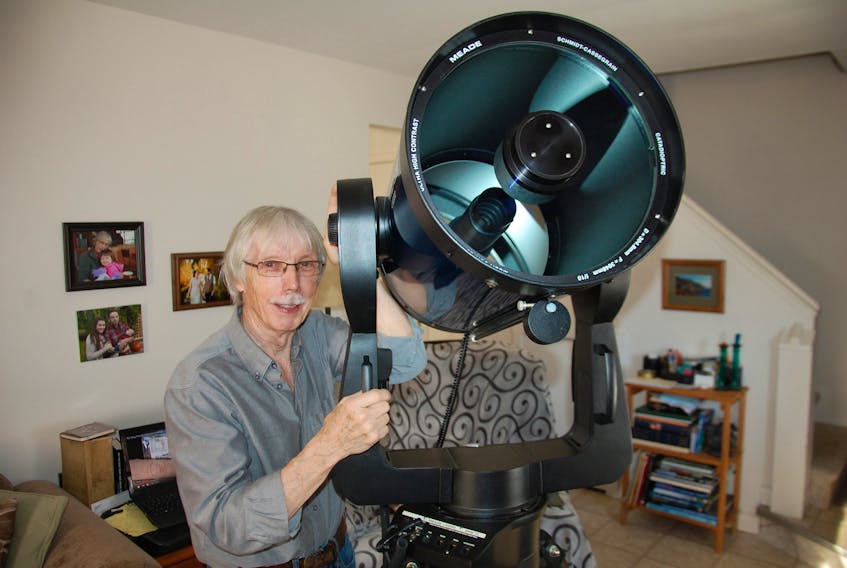CHARLOTTETOWN, P.E.I. - Glenn Roberts was only eight years old when he started eyeing the sky with great interest.
The fascination of looking heavenward has never left the 71-year-old avid amateur astronomer from Stratford, P.E.I.
“It’s just the curiosity of what’s out there and the beauty of the night sky,’’ said Roberts.
“There are always things to learn.’’
Fast facts
A total lunar eclipse takes place when the Earth comes between the sun and moon with its shadow. When this happens, the moon can turn red, earning it the nickname of blood moon.
Follow live coverage of the total lunar eclipse online.
Roberts has a 128-pound, 12-inch Schmidt-Cassegrain telescope that he uses to bring stars, planets, comets, and galaxies into sharper view. He likes to cart the telescope to Cape Breton, N.S., where he finds a cloudless sky to be clear as a bell.
“I can see a lot of things in deep space,’’ he said.
“I can see into the craters on the moon.’’
Roberts, who has been writing an astronomy column called “Island skies’’ for The Guardian for more than 20 years, enjoys giving Islanders a heads-up over what is worth gazing at with the naked eye, through binoculars or by peering into a telescope.
In last week’s column, he noted the major celestial event of January will be the total lunar eclipse on Sunday, Jan. 20. It starts at 10:36 p.m. A.S.T., the maximum is at 1:12 a.m. on Monday, and the eclipse ends roughly two hours and 30 minutes later.
Roberts notes this lunar eclipse is being classified as a super moon eclipse or blood moon eclipse. The moon will appear about 14 percent larger and 30 percent brighter than a normal full moon.
Roberts has been looking forward for some time to looking skyward to take in this impressive sight, which will not occur again for two years.
Sadly, a weather forecast calling for cloudy skies and snow may cast a dark cloud over the event.
“If the weather turns clear, people really should get out to see it,’’ he urged.
“If the skies are clear for a moment, I certainly will be out there. It’s important to me because I like to see as much as I can in the sky.’’
The observatory at UPEI will not be open to view the total lunar eclipse, but people can easily view it without a telescope, weather pending.
If poor viewing conditions exist, Roberts plans to turn his attention to his computer to follow live coverage of the lunar eclipse online.
RELATED









